As part of the continuation of the Special Feature- ‘Make in India: Shaping the Future’ published in the previous edition of Wire & Cable India, we have interviewed a number of leading Indian players in the wire and cable industry on the ‘Make in India’ initiative and the preparedness of the industry to be self-reliant.
“We will make the best products, will improve our quality further, make the supply chain more modern, we can do this and we will definitely do it,” the honorable Prime Minister Mr. Narendra Modi had affirmed while underscoring on the need to push for indigenous products and local innovations.
With the launch of the ‘Make in India’ initiative in September 2014, the pivotal aim of which is to reshape the country’s economic model, thus, creating a favorable environment for investment, development of modern and efficient infrastructure, and forging a partnership between Government and industry through a positive mind set.
The initiative hopes to transform the country into a major local consumption centre, as well as a global manufacturing hub. In essence, it implies that the country makes its own goods, both to buy internally and sell to the external world. The three essential features of this initiative includes: efforts to ensure huge inflows of foreign capital along with increased local private investments, a renewed focus to make as many products in India rather than import them, and promoting the use of locally-made products.
As Mr. Rajendra Ekbote, Director at Swaraj Technocrafts Private Limited says “We believe that with prevailing circumstances, we have been exposed to huge opportunities for domestic and international business. Moreover, being a ‘Make in India’ brand offering the best in class products, we see ample number of opportunities lying ahead.”
Over the past few months, PM Modi has been zealously advocating the idea of ‘self-reliance’ for the nation to strive towards building an ‘Atmanirbhar Bharat.’ The varying themes such as ‘self-reliance’, ‘vocal for local’, and ‘Make in India’ eventually integrate in an economic model that is an amalgamation of nationalism and globalization. It is essentially a clarion call for the manufacturing companies which would inherently require a close collaboration among manufacturing companies facilitated by industry and trade associations.
Mr. Vijay Karia, CMD at Ravin Group of Companies affirms that: “the notion of ‘Atmanirbhar Bharat’ means that it is a bottoms up approach right from local levels going to the top level, and not a top down approach. What the Honorable Prime Minister has explained is that every locality, every district and every State should be “Atmanirbhar”, i.e. produce, consume and also govern locally. Hence, decentralization is the key to developing the manufacturing sector in India, and making Indian Industry the global manufacturing hub.”
As the ethos of ‘Make in India’ or being ‘Self Reliant’ has been gaining strong sentimental value especially after the outbreak of the COVID-19 pandemic; and as a continuation of the series of interview feature published in the previous edition, Wire & Cable India interviewed a few Indian players in the wire and cable industry on the further implications of this initiative for the individual players and for the entire industry.
“The ‘Make in India’ initiative and Self-Reliance are critical to the overall goal of getting the country back on a healthy growth track and also in tandem with the vision for ‘Atmanirbhar Bharat’.”
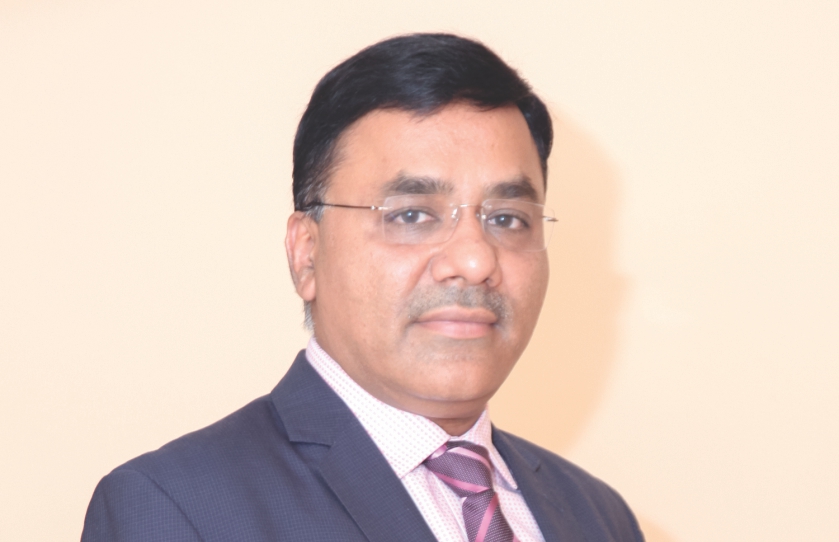
Wire & Cable India: What opportunities lie ahead for you?
Manish Agarwal: At a time when both the global and the domestic economy have both been impacted by the COVID-19 pandemic, we consider ourselves extremely fortunate to be in a sector which is very resilient and offers opportunity while serving humanity.
At Sterlite Power, we are committed to the vision of being 24/7 reliable and bringing quality power for all. India has some of the fastest growing cities in the world and consequently, there is a lot of downstream network congestion building up as utilities are grappling with the exponential demand for power which ageing transmission infrastructure is unable to cater to. Setting up additional greenfield infrastructure would require additional space, which is a constraint in India due to RoW issues, also, it would also mean higher time and capital investment. Therefore, the future is clearly in Uprate/Upgrade & retrofitting brownfield infrastructure to augment capacity, using the same corridor footprint, without taking up any additional space to deliver power to the last mile, in a timely and cost-effective manner.
In this context, transmission system planning and philosophy should optimize additional capacity by augmenting transmission systems. Sterlite Power’s bespoke solutions cater to these requirements of utilities through the mission critical framework of Time, Space and Capital. Through our solutions on thermal uprate, voltage upgrade and other technology enabled solutions we decongest and strengthen power delivery networks and enhance transmission capacities on existing power lines.
Furthermore, we see also see opportunities in the fiberization of power transmission networks. Fiber, riding over power transmission infrastructure is globally used by Government, Utilities, Telcos etc., for their long haul access communication networks due to excellent uptime, reliability and availability. Additionally, power distribution sector reforms as envisaged in the proposed Electricity Act will help in creating demand for power cables business, which was earlier suppressed due to the unavailability of capex in the distribution sector.
WCI: What is the preparedness level of the Indian manufacturing sector to be self-reliant and moreover make India a global manufacturing hub and what are the key areas of improvisation?
MA: The ‘Make in India’ initiative and Self-Reliance are critical to the overall goal of getting the country back on a healthy growth track and also in tandem with the vision for ‘Atmanirbhar Bharat’. In line with supporting this vision, the Government has announced significant reforms by way of amendments to ‘General Financial Rules’ (GFR), to allow only domestic bids in tenders valued at less than INR 200 crore. The Department of Promotion of Industry and Internal Trade ‘s (DPIIT) public procurement order was also revised to further give purchase preference only to domestic industry in public procurement projects. However, for these initiatives to succeed, it is crucial that all state governments adopt “Preference to Make in India” order in their procurement strategy. As public procurement accounts for almost 20-25% of India’s GDP, this has immense potential to boost domestic demand.
The Government of India is set to bring reforms in the power sector by amending Electricity Act (2003). The proposed amendments focuses on introducing cost reflective tariff to enable DISCOMS recover cost and reduce cross subsidy burden for the industrial and commercial consumer. This will help the industry to reduce their input cost burden and become competitive. In addition, the proposed Tariff Policy will make it mandatory to provide open access to consumers (one megawatt and above) in a time bound manner. These initiatives will further enable to create framework for holistic and integrated reforms in power sector to create completely open and free electricity market based on demand and supply.
Beyond this, to overcome barriers of infrastructure deficit, various policies and programs are being implemented by the Government. The draft logistic policy aims at bringing down the logistics cost of India’s GDP to 9% from 14%. Initiatives including the development of a dedicated freight corridor network to carry higher loads, with greater time efficiency and reliability and the Sagarmala Initiative- Port led comprehensive industrial development of India’s 7,500 km coastline, 14,500 km of potentially navigable waterways and maritime sector. All of these are initiatives are aimed at building holistic manufacturing ecosystems and world class logistic and transport infrastructure towards ease of doing business.
“A lot of large countries around the world are looking at India, not only to set up manufacturing hubs but also considering India in its scheme of things as a global supply chain manufacturer and more as a partner.”
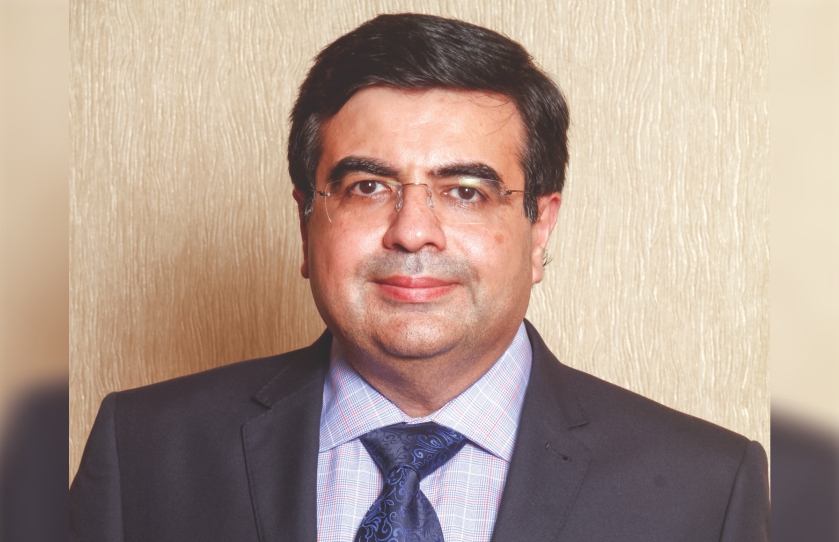
Wire & Cable India: What opportunities lie ahead for you?
Vijay Karia: The pandemic has created a situation which none of us across the world has ever seen. It has affected every individual, industry, country, and economy at large. It has destroyed plans, it has destroyed workplaces, it has destroyed economies and most of all it has destroyed notions. Nonetheless, with such huge numbers of things crushed, there is additionally an immense open door for creation and I accept that the opportunities that lie ahead, for us as well as for the whole Indian Industry, are exceptionally tremendous in extent. And this is where Indian adaptability like our quick reaction to change and our entrepreneurship would come into play.
In this way, I believe that it’s an exciting time for the industry, in light of the fact that whilst the large multinationals would be slow off the block and approvals at multiple places would be required, even the large Indian enterprises which faced with an uncertain situation should return to redrawing their budget etc. However, agile organizations like our own that are brisk in decision making will stand to benefit with this situation. The adaptability and the ability to survive and not just sustain but also perhaps growing in this kind of situation would give a huge edge over a lot of individuals who are scared of the uncertainty ahead.
We have to understand that no business, and especially large businesses, like uncertainty and therefore they always think in a very organized mindset, but entrepreneurial businesses do not fret over uncertainty because it gives them an opportunity to show their management and leadership skills and that’s where opportunity lies for all of us.
WCI: What is the preparedness level of the Indian manufacturing sector to be self-reliant, and make India a global manufacturing hub and what are the key areas of improvisation?
VK: As I said earlier, Indian entrepreneurs are very smart and perhaps that is why we see a lot of the large fortune 500 companies having Indian CEO’s. The multinationals who are in India are being very circumspect, very scared of the future and are holding on to cash. It is an unfortunate situation but it is true that most of them that we know are actually acting unethically and holding onto payments. Their future plans are also on the back burner.
On the other side, the current geopolitical situation in India, especially the situation with China has also created an opportunity for India which we have never seen. For the first time the government and the industry are aligned with each other and there is also a great fervor of nationalism. A lot of large countries around the world are looking at India, not only to set up manufacturing hubs but also considering India in its scheme of things as a global supply chain manufacturer and more as a partner. The leadership in India is also providing impetus to such a situation. Therefore, my outlook of the Indian industry is such that we are all very well prepared. As we have seen in the past few weeks, we have very quickly adapted to the changing situation, where even in the case of the lockdown, many companies were producing their essential items, though they were working with lower workforce but yet producing the same quality. Though output was lower, but yet far better than what it would have been if they did not have an adaptable mindset.
The situation where the government is also focusing on providing capital to the industry especially to the MSME segment is also very heartening and we will see this situation growing further. In fact, a reduction in imports will in itself mean a huge opportunity for the Indian industry and especially if we replace the USD 40-60 billion imports that were coming from China with Indian products, not only will we be having a trade surplus but overall industry will also be benefited from local consumption. There will be an added advantage of supplies to global hubs and therefore it would be a double advantage to our local industry if we play our cards properly. The key would be consistent quality, reliability, and commitment for which we need to develop locally relevant skills.
The government needs to now step in strongly and support the industry. From my talks with various government officials in the last few weeks, we’ve got a very strong feeling that the government is very keen to support such initiatives. What’s more, along these lines, the Indian industry is going to benefit from the outcome. There is likewise an inclination that we are seeing, that we want not just an Indian industry, but a sense of Indian ownership in the various industries in our country; where not a foreign entity/ company is establishing their business and using the Indian market to sell its products just because they are partially made in India. As per the thought out policy of an “Atmanirbhar Bharat” and from what I have understood from my talks with the Finance Ministry is that the notion of “Atmanirbhar Bharat” means that it is a bottoms up approach right from local levels going to the top level, and not a top down approach. What the Hon’ble Prime Minister has explained is that every locality, every district and every State should be “Atmanirbhar”, i.e. produce, consume and also govern locally. Hence, decentralization is the key to developing the manufacturing sector in India, and making Indian Industry the global manufacturing hub.
“Recovering with minimal impacts, India needs to get its acts together with the right policies. As many things are moving in India’s favour, we can be the destination of choice (if not the foremost) for global manufacturing giants.”

Wire & Cable India: What opportunities lie ahead of you?
Pranav Bansal: The COVID-19 pandemic has generated a lot of discussion about the new normal. In the midst of all the disruptions and economic fallout worldwide, India has a great opportunity to build an economy that is more resilient and diversified for global manufacturers and services. For Bansal Group, business opportunities are widespread on both domestic and international markets.
With the recent “Make in India” drive, some shift from purchases of imported products to Indian products is expected. This shift will create additional demand for our products on the domestic market. The overall demand is already reviving, as public and government spending has already improved from the level at which it was in April and May. If the situation continues to improve at this pace, we will see our operations coming back to normal very soon.
Also, there will be many more opportunities on international markets, as companies are trying to de-risk their supply chains which are largely dependent on a single country today. The short-term adverse effect on India is already visible and relatable to many. Having said that, the pandemic has moved the proverbial ‘cheese’; stakeholders can grab the best way to capitalise on the opportunities present under the new circumstances.
Although, exports were never a very big part of the wire industry as a whole, we surely expect a transformation in this changing scenario. For us, this has come as a great opportunity, as we have been working on making exports a good contributor to our revenue.
WCI: How prepared is the Indian manufacturing sector for becoming self-reliant and making India a global manufacturing hub? What do you think are the key areas of improvisation?
PB: Recovering with minimal impacts, India needs to get its acts together with the right policies. As many things are moving in India’s favour, we can be the destination of choice (if not the foremost) for global manufacturing giants in sectors like automobile including components and other engineering products, power, infra, electronics, pharmaceuticals, etc.
Although the international and domestic markets are replete with many opportunities, there are quite a few challenges and hindrances that the manufacturing sector must overcome to seize these opportunities. The fourth industrial revolution has begun, and India should strive to get a proper share of the pie.
Zero tolerance on quality: If we want to make our country a global manufacturing hub, we need to change the mindset of Indian manufacturers. They need to focus on making better quality products while being cost-effective. Production of complex products calls for a mechanism like Six Sigma for increased quality to reach “near zero” perfection in product and process development.
Abridged Manpower and Production Volume: The minimal workforce and compliance with social distancing and safety measures are adding supplementary pressure on manufacturers and suppliers. Having said that, the available workers although economical, lack the required skills, leading to inefficient productivity and increased cost. The labour cost as seen per product is practically the same or even higher in some places compared to developed countries. Therefore, action needs to be taken to increase the availability of more efficient human resource. Need of well-equipped training centres has to be mandate, going forward, to have effective productivity.
Logistics: Another challenge we face in our kind of processing industry is the cost of inland transportation, which makes the low value-added products uncompetitive, especially if the products are not manufactured near seaports.
Cost of funds: To compete internationally, we need to work on our cost of funds. Although this cost has dropped in the last 3-5 years, it is still far from being competitive.
Last but not the least, the Centre and States should continue to have enough elbow room for looking after the vulnerable sections of the industry or society. The government must ensure continuous liquidity for both producers and consumers of goods and services, retain a lower interest-rate regime, stay nimble and act quickly as and when a sector starts experiencing stress.
“In the post-COVID world, when the world economy has gone down, we can still achieve great progress with the ‘Make in India’ initiative.”
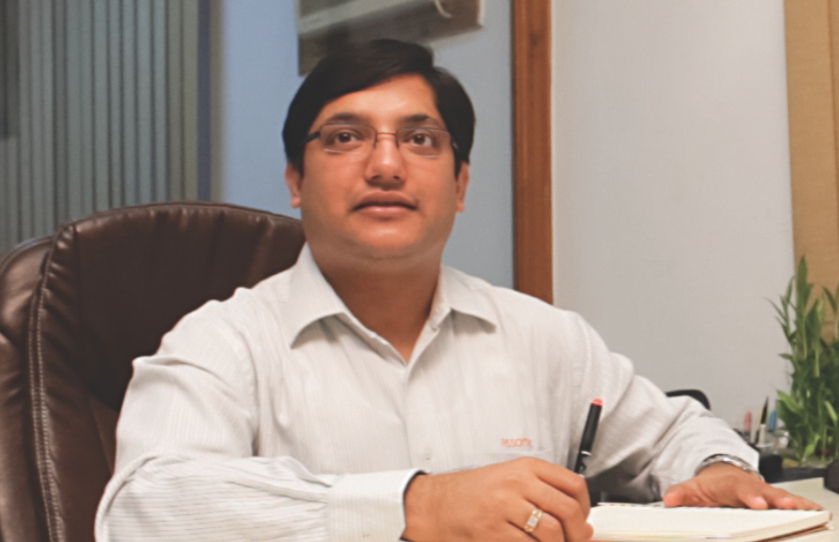
The ‘Make in India’ initiative was launched to facilitate investment, foster innovation, enhance skill development and with the primary goal of making India a global manufacturing hub. There are many success stories connected with this initiative and our country is coming up in a big way, especially in the auto sector wherein the country has been getting huge earnings and revenue through exports besides strengthening the technology and increasing the scale of employment.
Globally, the demand for mobile phones is growing, and India has begun to make an impact in this industry, and has helped serve the nation by stopping a whopping outflow of dollars in the past few years. Through this initiative, the government is striving to make India a global manufacturing hub by attracting multinational companies as well as domestic companies to manufacture their products within the country.
Be that as it may, these rough rides of progress in Make in India initiative in the past 6 years may have become bumpier as a result of COVID-19 outbreak. All the activities may have gone haywire as most of industries were shut in the lockdown period and as an outcome, the demands of everything also went down drastically.
Our nation is in the ‘unlock phase’ now and the government has likewise attempted its best to provide support to the economy. However, the positive outcomes in this direction would require some time to take effect. Since the whole world has been hit hard by the pandemic, every country is in isolation mode and as a result, the demand has gone down for exports. The overall exports in second quarter have gone down substantially comparing to the same period of 2019, but the only silver lining in the situation is that for the first time, the imports are less as compared to exports, that is perhaps due to the downfall of crude prices in the International market and slow but steady local for vocal initiative of the Govt.
While the ‘Make in India’ initiative has greatly enabled the country to make progress in building capacity in practically all the sectors, the demand for exports has hit all-time low. Our Prime Minister has given a call to the citizens to be ‘Aatma Nirbhar’ and has put forth his vision of a ‘Self-reliant India’ which is again a great scheme working hand in gloves with the ‘Make in India’ initiative. India has developed a huge capacity for making PPE kits and other medical equipment which is now being exported to many countries around the world. This has been made possible because of the vision of the government which is in a way can be considered as a dividend for the economy of our country.
The COVID-19 pandemic has made countries across the world to reassess their business approach and work culture. Under the new conditions prevailing in the world, India can take a great advantage as the government is trying its best to improve the efficiency in the bureaucracy with the updating and scrapping out of various outdated laws. However, more such changes are expected and the mindset of the people has to be changed.
The wire and cable industry is a core industry considered under the 25 sectors of the economy and it has always been a key pillar for the ‘Make in India’ initiative- which is a type of ‘Swadeshi Movement’. The World Bank’s 2019 “Doing Business Report” acknowledges India’s jump of 23 positions against its rank of 100 in 2017 to be set now at 63rd rank among 190 countries. In the post-COVID world, when the world economy has gone down, we can still achieve great progress with the ‘Make in India” initiative. As put into words by IMF Chief and Indian American economist Gita Gopinath to the media, “This is a crisis like no other, but this same crisis will have a recovery like no other.” As we are going through the unlock period, we hope to have the kind of recovery from this crisis which is unprecedented and remarkable.
However, the Indian manufacturers must compete with the world and must upgrade the manufacturing unit and machinery to make itself more economical. We can make use of the support provided by the government to a certain extent only; however, to achieve the dream of a ‘Self-reliant India’, we will have to put forth great efforts.
This is an opportune time for each of us to bring in new techniques in manufacturing, innovations and a new approach of working. At ASSOMAC for long we have been striving hard to provide the best international technology to wire producers locally at a reasonable cost. More so with the current Vocal for Local perspective, we have planned to start manufacturing a lot of low cost import substitution equipment which were either being imported from other countries due to the quick deliveries or low cost. Over last 5 years, we have invested heavily in developing our workshops and facilities with state of the art large CNC machines, automated pre treatment and paint shop for machine frames, components and sheet metal, etc.
We should hope to see the varied pace of revival in key sectors and be optimistic about the future. We should work to the true essence of “Make in India” slogan to instill hope and encourage our country to bring back the economy on track for a prosperous India – India 2025.
“To fulfill the ‘Make in India’ dream, we need to be globally competitive. We need to catch up a lot as we have to build large capacities to take advantage of economies of scale.”
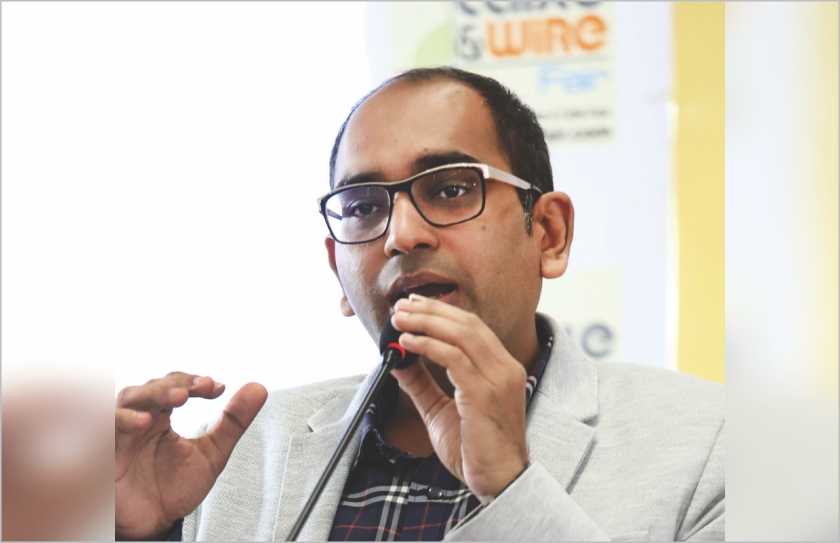
There has been a lot of buzz and uproar about the ‘Make in India’ initiative but one must understand that people are not simply going to buy products because they are made in India unless it has quality and better value for money. To fulfill the ‘Make in India’ dream, we need to be globally competitive. We need to catch up a lot as we have to build large capacities to take advantage of economies of scale. The local companies need to make profit so that they can plough back money for research and innovation.
While we certainly have the capability to become ‘Aatmnirbhar’ – as directed and dreamt by our Hon’ble Prime Minister, however, this can only be made possible when companies of the same industry come together to ensure innovation and realize the up gradation in quality and think of a larger picture.
With respect to some common infrastructure costs resulted from – power, finance, gas, transport, port fees etc. which is generally very high and they are a few major impediments which raises the final cost of a product. The proper support from the government authorities in bolstering the growth of the manufacturing industries could forge an ecosystem that is profitable supported by an efficient infrastructure.
If we talk about the Indian wire and cable industry, we are one of the lowest converters of wire from wire rod but we feel that by addressing some pertinent challenges regarding the infrastructure and thereby finding solutions to those challenges could gear us up to enhance our presence in the global market. The sentiments about Make in India initiative have been greatly favorable and it is a promising indication for the further growth of the manufacturing industries and thus, of the overall growth of the economy. And I am confident that we can do it with a renewed energy and positive mindset.
“If we rapidly adapt to the changing scenarios, and shift towards a systematic and strategic plan, we would be on the path of enormous economic growth in the coming years.”
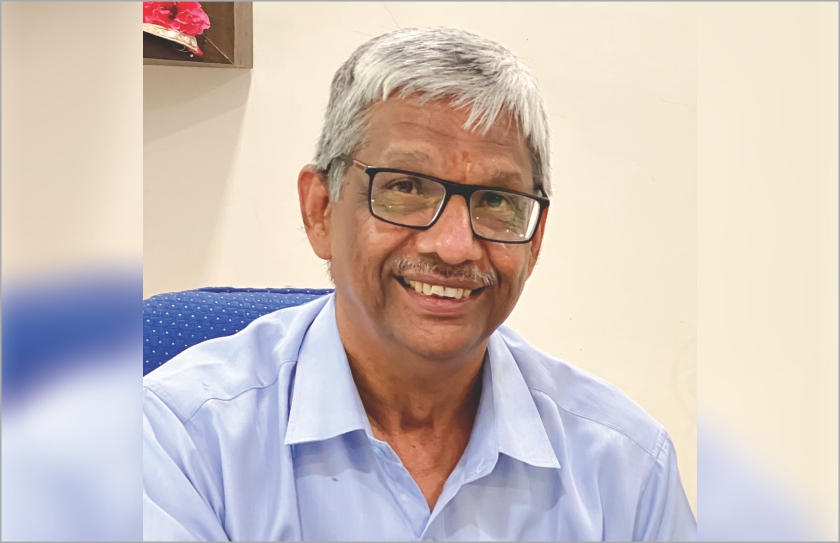
Wire & Cable: What opportunities lie ahead for you?
Rajendra Ekbote: While the outbreak of the pandemic has brought certain unprecedented challenges, it has also presented us with enormous opportunities to generate new business in India. It is quite difficult to predict what the impact might be but it is interesting to explore the opportunities that lie ahead.
It is a strong possibility that the third world nations would be hesitant to buy products from the countries that has been hugely affected by the COVID-19 pandemic. This will give us an opportunity to reach out to those customers and fulfill their requirements through our ‘Make in India’ products. We believe that with the prevailing circumstances, we have been exposed to huge opportunities for domestic and international business.
At Swaraj, the customers will always be our topmost priority. Pandemic or no pandemic, we are committed to relentlessly serve the demands of our customers. We remain geared up and compliant to match the industry standards and consistently upgrade ourselves to offer nothing but the best to our customers. Cost competencies, superior quality of our products and the capability to deliver large orders within justified time limits make us stand tall and apart from our archrivals. Moreover, being a ‘Make in India’ brand and offering the best-in-class products, we see ample number of opportunities lying ahead.
WCI: What is the preparedness level of the Indian manufacturing sector to be self-reliant and moreover make India a global manufacturing hub and what are the key areas of improvisation?
RE: The COVID-19 crisis continues to largely affect lives and the economy on the global level. As it is commonly said, ‘there is light at the end of every tunnel’, we believe that every crisis comes with its own set of opportunities. Remember the recession phase in 2008-2010? The visionaries that dreamt big during that phase are industry leaders in their respective domains now – Uber, Zomato, Paytm, AirBnB, etc. are a few of these brands. The matter of concern right now is that the preparedness level of the Indian manufacturing sector might not be up to the mark. But at the same time, this is also true that we have the right potential and caliber to pave our much anticipated way into the global manufacturing sector.
The local organizations should analyze their individual supply chains and compare it with that of their competitors in the market. The government should create awareness about the importance of efficient productivity, increase in quality and production levels to decrease the manufacturing cost, enabling to achieve global competitiveness for Indian manufacturers. The government’s efforts to generate FDIs in the manufacturing sector have tasted limited success. There’s no denying that Indian economy has suffered a major setback due to the pandemic. However, if we rapidly adapt to the changing scenarios, and shift towards a systematic and strategic plan, we would be on the path of enormous economic growth in the coming years.
The central and state governments of India should work in unison to build business-friendly policy frameworks and bring India at the forefront of global manufacturing. We are committed to effectively utilize the benefits offered by the government policies dedicated to boosting the infrastructure and the economy of our nation. Finally, the government should greatly emphasize on up skilling the young generation of the country as their innovative ideas and skill set to manufacture high quality goods in India will bring the much-needed transformation in India’s conventional manufacturing paradigm.
“The ‘Vocal about Local’ campaign, which calls for the promotion of indigenous products to make India self-reliant, will surely help us broaden our ‘Make in India’ vision.”

Wire & Cable India: What opportunities lie ahead of you?
Arvind Agarwal: Havells has witnessed immense strength and resilience over the years and is a competitive brand in the market. Alignment with the ‘Make in India’ vision, a key tenet of Havells, has always helped us spur innovation further. The company invests heavily in consumer research to find intelligent solutions. Innovation is the pivot that has given us growth opportunities and transformed the company to a large extent.
Today, we have 9 R&D centers and 14 state-of-the-art manufacturing facilities across 8 locations in the country. I think Havells is either the leader or amongst the top three players in most of the business verticals it operates in.
The ‘Vocal about Local’ campaign, which calls for the promotion of indigenous products to make India self-reliant, will surely help us broaden our ‘Make in India’ vision; it will eventually give us plenty of business opportunity to offer quality products to our customers. The initiative will enable Havells as a home-grown brand to bolster its innovation DNA, capturing the imagination and mindset of the next generation of consumers.
WCI: How prepared is the Indian manufacturing sector for becoming self-reliant and making India a global manufacturing hub? What do you think are the key areas of improvisation?
AA: A hyper competitive global economy, macro headwinds and fluctuating consumer mindsets have drastically altered corporate strategy and how businesses and leaders choose to buck the trend. We feel this is the right time for companies to ramp up manufacturing in India itself driving backward integration and creating opportunities for MSMEs.
Our company has been ‘making in India’ since 1976, when it established its first plant in Delhi. Today over 90 percent of our products are manufactured in-house at our 14 ultra-modern plants spread across the country. Our most recent plant at Ghiloth, Rajasthan, is South-East Asia’s most advanced and fully integrated AC manufacturing facility. It has the unique distinction of being the country’s first air-conditioner plant with machines and processes combined with Artificial Intelligence and IoT; and it uses what is known as Manufacturing Execution System (MES), which is compatible with industry 4.0. In addition, we source over 78 percent of our raw materials locally.
“The huge scope due to the oncoming digitalization trends will make the Indian market a very predominant as well as a responsible part of the global supply chain.”
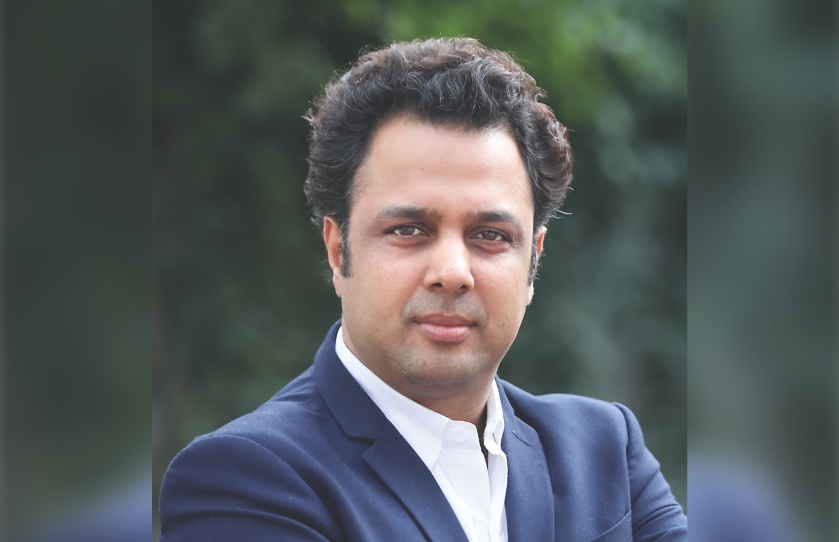
Wire & Cable India: What opportunities lie ahead for you?
Ashish Mangal: The ongoing crisis due to the pandemic might be a setback for the present running year 2020 more or less, but after a period of time, after getting recovered from this pandemic, the situation will be much better and worthwhile. This time needs to be utilized majorly for changing the mind-set to adopt the new way of working, retooling ourselves and re-strategizing the working approach. Efficient and careful financial decisions also shall be the major focus and concern while investments might take a back seat. The supply chain needs to be reenergized with stronger players in the fold who are mentally prepared to work with you as a business partner more than what they were before this onslaught of this pandemic.
Being aggressive in marketing and putting in efforts to seek orders from the countries buying from China is an added opportunity which will be huge in terms of volume for the field of cables and conductors. Apart from this, there are many companies who are vying to shift their manufacturing base from China shall be another tremendous opportunity if our country is successful in pulling a few of them to our country business fold.
Actually, the time right now is filled with plenteous opportunities which demand us to work efficiently with speed, and this is also the time to think different, enhancing our digital capabilities, improving ourselves and adopting the cost-optimization approach. Any task taken up now will certainly fetch the desired results since everyone is serious in performing and proving their worth. Honing personal skills would make every individual smarter in working and also force him to think deep while taking decisions. It’s not that the above traits were not important pre-COVID but then more was talked about and preached than practiced.
WCI: What is the preparedness level of the Indian manufacturing sector to be self-reliant and moreover make India a global manufacturing hub and what are the key areas of improvisation?
AM: India stands at a unique vantage point to emerge as a balancing force and also a preferred business destination, which will make it a manufacturing hub for the world. Our Prime Minister has promoted the new concept of 5 “I” formula viz. Intent, Inclusion, Investment, Infrastructure, and Innovation to make the country “ATMANIRBHAR” – Self Reliant. The ideology basically is a message to make India self-reliant and this would surely call for a very close coordination between the government and various industries to work together to return to a sustainable targeted growth path. Together both – the industry as well as the government will have to develop concepts, think big and work in sync in order to make India a self-reliant country.
Post COVID, it has become very important for us to focus on the trends prevailing in order to help the Indian Economy to bounce back not only into a positive zone but move around to be more than 7%. The identified areas are:-
- Growth in digitalization
- De-carbonization and decentralization of energy sources (Green energy, renewable source of energy, green buildings, air quality, last mile connectivity)
- Automation of operations – Usage of AR/VR, 3D printing, Industry 4.0, Internet of Things, Logistics
- Urban transportation: E-mobility
The huge scope due to the oncoming digitalization trends will make the Indian market a very predominant as well as a responsible part of the global supply chain. India will also have to enhance energy availability to a very large extent and make it as robust as possible. The energy market will go up to a large extent influenced by factors like – 5G, artificial intelligence, cyber security and many more such aspects. The most important part of this is that it will help a lot at conserving cash, conserving capital expenses and conserving cost.
This all is going to be achieved through another set of new principles of 5 A’s: Automation, Agility, Availability, Affordability and Accessibility.
All these activities are going to be the focus areas for improvisation in the coming days and we have to actually begin from today. The saying “Survival of the fittest” in these times has got converted to “Survival of the Quickest”, so, speed will be the guiding factor blended with the right direction. These all very important Doable points shall be the key to the success of Industries during the new normal and reducing wastes from all processes shall contribute to the success story in a big way.
“If we are able to grab this opportunity, India can be a global hub of manufacturing.”

The COVID-19 pandemic has brought the world to a near halt and the extreme situation created by the pandemic is unprecedented. It may take another two quarters to gain momentum. Although, the times are very challenging but we do have a golden opportunity here. A very negative sentiment against China is prevailing globally and a large number of companies are planning to shift their manufacturing and supply lines out of China.
If we are able to grab this opportunity, India can be a global hub of manufacturing. But, we will have to make lot of efforts to make that happen. We have to reshape the fundamentals of our strategy. We have to see business from a long term perspective and have to have a new vision and renewed energy. To penetrate the global markets, our emphasis should be on product quality, efficient production lines, constant R&D, firm commitment, updated automation, early deliveries, competitive pricing and efficient after sales services. We have to revitalize our production Lines. India can be self-reliant and can replace China as the world’s factory.
For an effective ‘Make in India’ revolution and to attract foreign companies to our country, proper support from the government is of utmost importance. Our priorities should be factors like- ease of doing business, removal of bureaucratic hurdles, unwanted compliances, red-tapism, outdated labor laws and land acquisition laws. The government should expeditiously plan dedicated industrial parks all over the country and should also implement business friendly schemes and should impose high import duties on the inferior and cheap products from China. As part of this scheme, the government should also enable infrastructure for efficient logistics and there should be liberal export incentives.
India is a large country and it has a very dynamic and huge market. If we act prudently, we can win the global and Indian markets. Sarvasv Group has vast experience in global trade, exporting wire and cable making machines to about 14 countries. We have successfully competed with some of the top Chinese companies in many international tenders and contracts several times and successfully executed turnkey projects against Chinese competition. To beat China, we have to have firm resolve. So, let us evolve and shape-up, and I am confident India can do it.
“I would prefer the idea of ‘Make in India’ by the Indian companies and not just MNCs establishing FDI to create manufacturing units.”
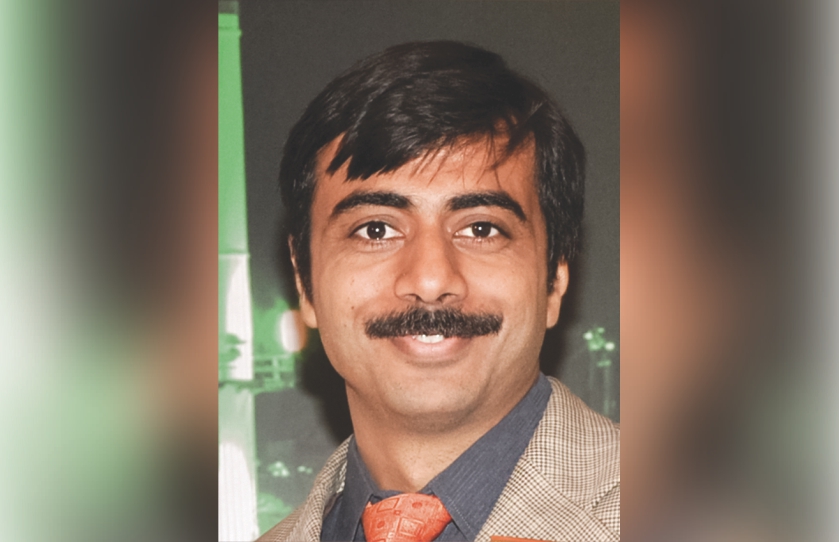
Wire & Cable India: What opportunities lie ahead for you?
Dhruv Shah: The current situation has given us a break and time to everyone to look for high competitiveness in production operations. We are in the field of Industrial Automation Solutions which has been strongly driven by the need to find solutions intense labor problems. There is also a number of promising infrastructure projects by the government to be launched in the coming years. With the ongoing pandemic crisis, the challenges regarding urbanization and the value of scattered villages to be realized from the perspective of industrial development, the rural market could be the next big market.
WCI: What is the preparedness level of the Indian manufacturing sector to be self-reliant and moreover make India a global manufacturing hub and what are the key areas of improvisation?
DS: With every opportunity there comes a sense of responsibility. While cultural change is one of the major impediments for the Indian manufacturing industry to become highly competitive with global quality standards, the support from the government and seamless integration between the states need to be realized at the earliest. I would prefer the idea of ‘Make in India’ by Indian companies and not just MNCs establishing FDI to create manufacturing units. In order to achieve further growth of the industry, we need to work strongly to strengthen the entire supply chain system for high quality from raw material to the finished products.
“There is sufficient capacity and demand in India for Indians to be self-reliant. The Indian businesses are very resilient and given the right conditions, we can do wonders.”

Wire & Cable India: What opportunities lie ahead for you?
Ishaan Nath: This situation caused by COVID-19 has put the economy at a standstill. It can be considered a reset for the economy and with it hopefully will come huge opportunities for us as well as other Indian businesses. The outbreak of COVID-19 along with the situation at the India-China border has led to an anti-China sentiment across the country. As a result of low demand and prevailing geopolitical situation, imports are expected to reduce. In a normal situation, there is enough volume and capacity in India for us to be self-reliant.
At Kadimi Special Steels, we have always focused on buying from Indian manufacturing companies wherever possible as we truly strive to support other Indian businesses. Also, we have invested heavily in state-of-the art equipments and manufacturing processes in order to produce high quality wires for automotive usage which is comparable with any of the leading companies in the world.
WCI: What is the preparedness level of the Indian manufacturing sector to be self-reliant and moreover make India a global manufacturing hub and what are the key areas of improvisation?
Ishaan Nath: There is sufficient capacity and demand in India for Indians to be self-reliant. The Indian businesses are very resilient and given the right conditions, we can do wonders. However, there are a few impediments like – lopsided duty structure and the existing free trade agreements make India the perfect dumping ground for companies looking to export their products. To elaborate, in many cases the finished products have lower duties than raw material. Thus, even assuming that price of goods is same between Indian companies and overseas companies; there is a direct price advantage for customers to export their products. The government should address this anomaly at the earliest.
Moreover, India should be doing free trade agreements with countries where companies treat Indian products fairly and are willing to buy Indian products. Currently, the FTA’s are with countries where it is very difficult for Indians to sell. These countries in my opinion are only interested in selling to the large consumer base in India. Furthermore, limited availability of credit and high cost of credit makes it difficult for Indian companies to compete with goods coming from overseas. Various countries support exports of their products by providing insurance on payments; while Indian companies have no such safety while selling their products. These factors enable overseas competitors to give very favorable terms for their exports.
Furthermore, the high cost of inland freight is a major issue that can impede us to be self-reliant. For example, it is sometimes cheaper to ship goods from East Asian countries to our automotive hubs in Pune or North India than it is for companies in South India to transport via road/rail. The government must make it a priority to reduce input costs and taxes.





